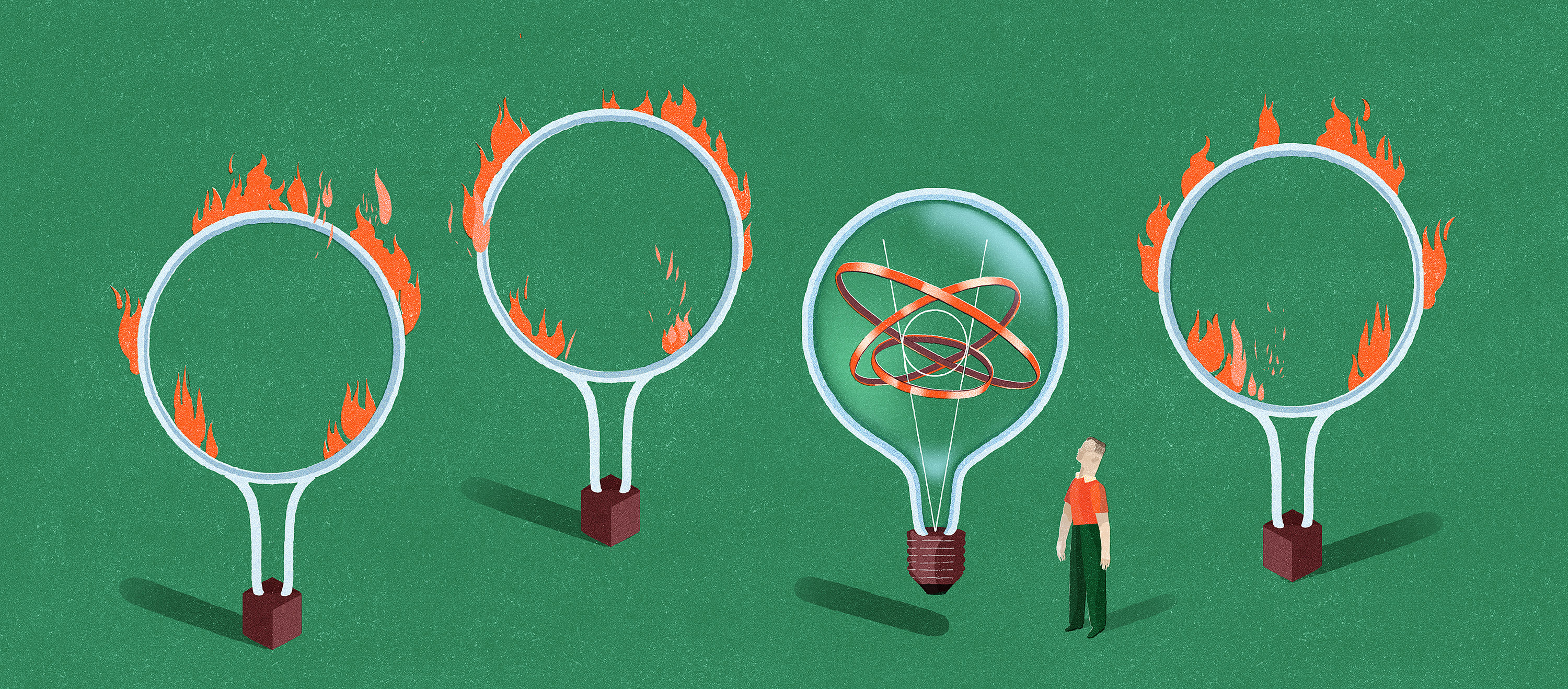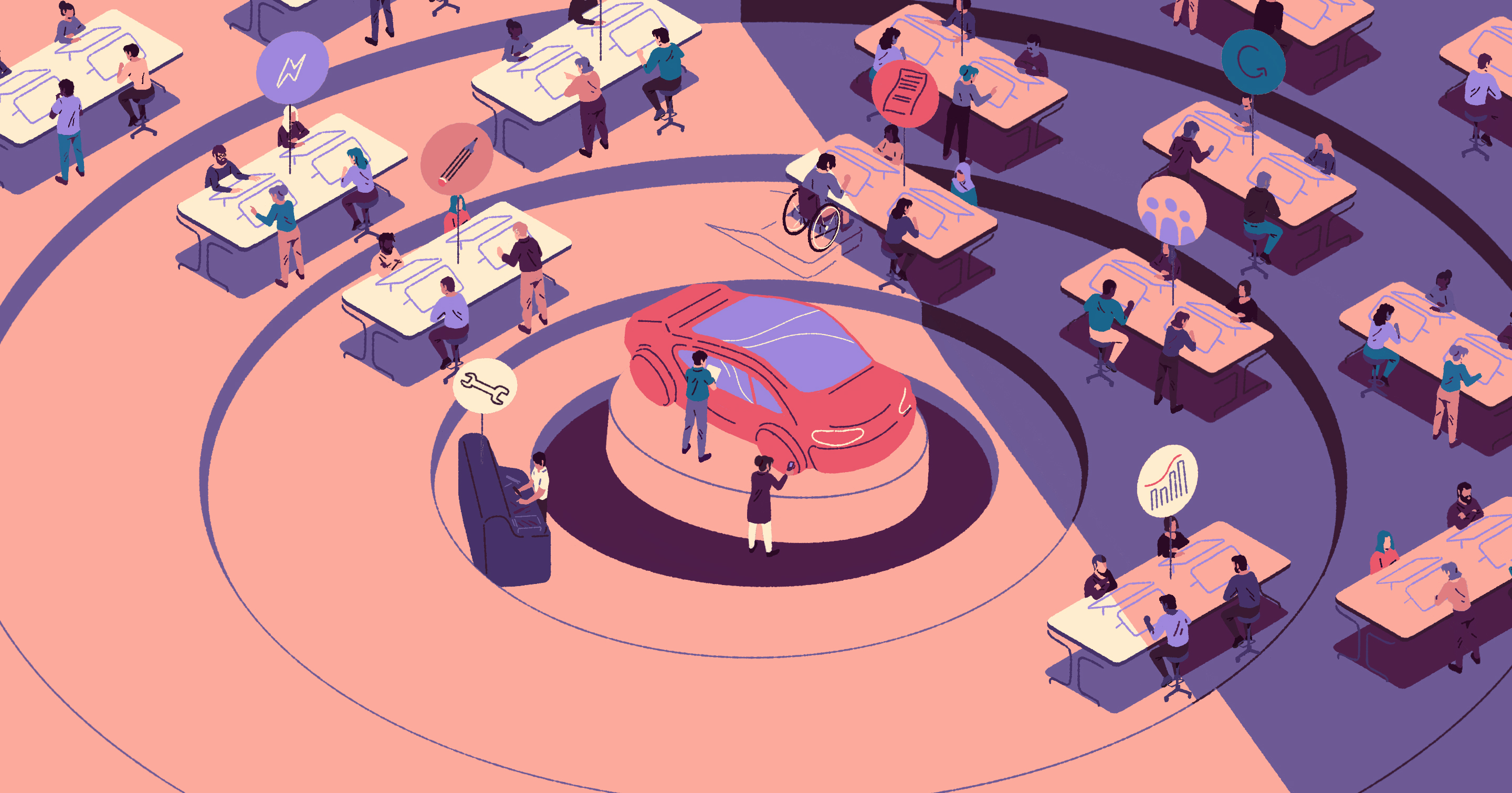A 5-Year Collaboration to Turn Canada’s Busiest Airport Into Its Best

Toronto Pearson is North America's second largest international airport and far and away the busiest in Canada. But despite the completion of a gleaming new Terminal 1 in 2004, its passenger satisfaction scores—as measured by Airports Council International—remained dismal. Beginning in 2014, a new executive team, led by CEO Howard Eng, was determined to change those results. It began with embracing a new vision—admittedly audacious—of becoming “the best airport in the world.” For help, they partnered with IDEO, launching a journey of transformation that continues today, and has been marked by many surprising, illuminating, and sometimes hilarious moments.
The following oral history recounts that process, which has been defined by an unusual collaboration: Greater Toronto Airport Authority (GTAA) manages the airport with a staff of 1400 employees, while the airport as a whole employs approximately 50,000 people across 400+ organizations. How do you bring them together?
The voices telling this story come from both sides of the relationship: Scott Collier is the Vice President of Customer and Terminal Services at GTAA, and Mike Ross is GTAA’s Director of Commercial Development. On the IDEO side, the project was led by Owen Rogers, a Partner and Senior Design Lead; along with Mat Chow, Director and Organizational Designer; and Nic Pajerski, former IDEO Design Lead.
Setting the Scene
In 2014, Scott Collier became GTAA’s Vice President, Customer and Terminal Services, a role that left him responsible for the Commercial and Terminal Operations of the airport—all of those things most visible and arguably most frustrating for passengers. He had an unusual background for an airport executive, having spent his career primarily at PepsiCo across North America.
WHY SCOTT TOOK THE JOB AT TORONTO PEARSON
Scott Collier, Vice-President, Customer and Terminal Services, GTAA: As a Toronto area native and an admittedly frequent traveller through Pearson, I was always fascinated by the incredible complexity of the airport, yet the apparent disregard for the interests and concerns of the traveling public. It felt as though every point within the travel journey was designed to frustrate the passenger, and, in most cases, for no apparent reason. I also knew that there are many industries that run hyper-complex operations but still manage to put the customers first. It seemed logical to me that we should be able to do that at an airport as well. If nothing else, it would be a heck of a challenge.
HOW DO YOU SOLVE A PROBLEM LIKE AN AIRPORT?
Mat Chow, Director and Organizational Designer, IDEO: Toronto Pearson—or really any airport—exists to move three things: people, planes, and baggage. But ironically, airports are never organized that way. They’re siloed. There is very little ownership of the airport as a whole. But at IDEO we have this principle: we organize around the work, not work around the organization.
Nic Pajerski, Design Lead, IDEO: Airports are gnarly because everything is no one's responsibility. Or at least that's what it felt like.
Mike Ross, Director of Commercial Development, GTAA: I like to joke that it says "authority" on my business card, but we really don't have “authority” over anything. The many tens of thousands of frontline employees, working for over 400 companies, all have their own mandates, their own safety rules, their own way of operating. We just house and host them.
Scott Collier, GTAA: Think about the passenger's journey through the airport. Where do you park? How fast is the check-in process? Will my carry-on bag be allowed? How long does it take to get through screening? Are the bathrooms clean? The number of decision points are insane! And if any one of those steps starts to break down, you're done—and we’re done. Our performance falls apart and we have let the passenger down. If they're running to their gate—and we proved this—our passengers aren’t spending any money. We know for a fact that improving wait times by one minute translates into about a million and a half dollars for the airport in sales. It's crazy, but what is even more appalling is that no one cares. You can’t make this stuff up! So long story short, unless the entire enterprise is aligned around the one thing we all have in common—the passenger—we will never achieve our aspiration to be the best in the world. And that’s the cool thing about working for an airport: bringing all of the organizations together toward a common cause. That's the challenge. The question, therefore, was “How?”
The Kickoff
In 2016, IDEO and GTAA began working together to improve the airport, kicking off the project with an exercise meant to let everyone see the airport with fresh eyes. Armed with a checklist, the two teams went out together to observe how different types of people moved through the terminal.
AN EPIPHANY AT SECURITY
Owen Rogers, Partner and Senior Design Lead, IDEO: We walked around the airport for about four or five hours, and we would stop and watch. Scott’s very inquisitive. He'd say, "What do you think about this? What do you think about that?"
Scott Collier, GTAA: I remember we were at domestic screening in Terminal One—our biggest. It was summertime. There are kids crying. And we see a mother losing her mind trying to keep her kids together while navigating through a massive wait line. It was so disheartening to watch her have to endure that in our airport. Welcome to Toronto Pearson! How do you like us so far?
Nic Pajerski, IDEO: She had a stroller and a baby in a sling, and her bags, and she was also trying to navigate the thing that everyone else is doing.
Owen Rogers, IDEO: We all stopped and watched. Scott’s team was with us as well. And they all kind of rushed over to help her—because that's what they do, they're customer service.

Nic Pajerski, IDEO: We had sent everyone out to do this design research activity as a team, thinking that they'd be able to dig deeper. But this was very demonstrative of how broken everything was. It was an enlightening moment: obviously the thing that we have isn't working. For everyone.
Scott Collier, GTAA: Owen and I were just kind of looking at each other and shaking our heads. And I said to him, “So, can you help us?”
Owen Rogers, IDEO: Scott seemed to realize in that moment, "Oh my God, this is what we're dealing with." But I said, "As a designer, all I see here is opportunity.” Airports have really driven themselves down to a place where—for a designer—there's nothing but upside. You could tweak the simplest thing and be heralded as a genius because it's so bad. I mean, they're all trying really hard, it's just, you know, they’re running around trying to fight fires the whole time. Nobody is actually stepping back and saying, “How can we make this whole thing better?”
WHAT IDEO COULD (AND COULDN’T) DO
Scott Collier, GTAA: Owen said to me, "We can work on this but it's a very different problem than you think it is.” And I said, “Oh really? What is it?” I'm thinking he's got the magic bullet. Instead he turns to me and he says, "The problem is you." And I go, “The problem is me? I'm new! I'm nine months into this! What do you mean?” He says, "You guys don't get it. You don't know how to empower this crazy place called an airport to get all the people who work here, the various stakeholders, the airlines, to work together. You act like an authority. You like to tell people what to do. And in this very complex ecosystem that's never gonna happen. So I can do this little project and we can come up with some suggestions. But fundamentally, unless you change the way you behave, and you demonstrate a willingness to others that you're going to think about this differently, you're wasting your time."
A CATALYTIC REALIZATION
Scott Collier, GTAA: Roughly 50,000 people work here. Over 450 different organizations. The airport authority is 1,500 people, and truth be told, we really don’t have much control over anything—although we delude ourselves sometimes into thinking we do. Our mindset was: We know better. We like to tell people what to do. We know what's right. But that wasn’t the right kind of leadership. It wasn't inspiring, wasn't passenger friendly, wasn't commercially successful. It had created an airport that was, quite frankly, not particularly effective. And it had to change. That one comment from Owen, that one sentence—"the problem is you"—was the turning point for me.
A Gnarly Problem
In 2016, IDEO and GTAA began their first project together, working to rethink the security screening process. But it soon became much bigger than that.
REGULATIONS AND RISK
Scott Collier, GTAA: In the U.S. you have TSA; in Canada we have CATSA (Canadian Air Transport Security Authority). At Pearson we had among the worst wait times in North America, certainly in the bottom 10% of any large airport. Worse, it was a horrendous experience. The staff weren't particularly friendly. Different sectors had different procedures. Different times of day were different. You never knew what you were going to get. Above all, our relationship with CATSA was broken. And their relationship with Air Canada, our flag carrier, was, to be blunt, toxic. We couldn’t have a conversation about improving things because we didn’t talk to each other at all! We talked over one another. And it was a real shame because the fact was all the people involved were really good folks. But I knew that unless we get our passengers through check-in and security quickly, they'll be running to the gates, they will be late, the airline's on-time performance will suffer, everyone is miserable, and it's a debacle all around. No winners, just losers. So it was kind of like, "I’ve got to fix this, but I have no idea where to start."
Mat Chow, IDEO: Airports are a place where safety and security is—and should be—the first concern. But that changes people's attitudes towards risk, and trying new things. When we started, we tried to encourage people to see the difference between taking risks unnecessarily—jeopardizing the safety and security of passengers—and challenging the status quo; not just doing things the same way because that’s how they’d always been done.

Owen Rogers, IDEO: When we first started working at the airport, whenever anything would happen—it could be a bit of paper on the floor, a light bulb not working, or god forbid an airplane crashing—everybody just points to someone else: "Wasn't me!" It was the biggest early insight we had. At IDEO, the way in which we design, the way in which we take on problem solving, is inherently collaborative. This wasn’t that.
THE MOMENT THINGS BEGAN TO CHANGE
Owen Rogers, IDEO: We had a workshop where we brought all the stakeholders together. We had groups of four to six people around a table. We'd framed the problem and we talked about it, but they're all pissed off that they have to be there. Their job is to run CATSA and it's really hard and nobody understands.
Nic Pajerski, IDEO: Going in, CATSA had this feeling that everyone in the airport kind of hates them, that their job is to be slow, to be meticulous, and it had built up into this kind of self-fulfilling aura. But then at the workshop, we presented all this inspirational work, and suddenly they get a lot of people outside of their organization thinking about their problems.
Owen Rogers, IDEO: We did one of IDEO’s creative exercises—we call it the spaghetti bridge—where we work in teams to build a cantilever out of spaghetti. Not one of them had done it before, and they started out suspicious. But next thing you know, they're all completely absorbed in the exercise! The yellow team wants to get the longest cantilever bridge! And the yellow team's winning! Everybody's whooping and cheering—and they don't even realize the CATSA people are working with the airline people!
Nic Pajerski, IDEO: By the end of the day, CATSA realized they had a lot of other people being sympathetic to the problems that they’d been dealing with all on their own. It was a powerful moment and a big milestone in the journey toward greater empathy and connection across disparate teams. This was the moment when human-centered design began to make sense across a large enough swathe of the airport population that it could take hold and start to facilitate change.
Owen Rogers, IDEO: So then we take the issue on: "What would you like to see the security experience of the future be like?" And they all lean into that question—together! And they make these amazing scenarios of what could be if, lo and behold, everyone works together and the passenger is at the center. Four hours later we finished this workshop, and the guy who ran CATSA stood up and said that: "Wow, if we could really put the passenger at the center of this, and we could all do this together, we could really change things." Up until that point, Scott and GTAA were measuring us on, "Have you solved it with your silver bullet?" And after that they understood, "This is about transforming our organization, writ large. This isn’t trying to fix baggage. This is about uniting the 50,000 people that work in this airport, regardless of which team they’re on." And that's where the second project came from.
Starting A Movement
A NEW MISSION STATEMENT
Scott Collier, GTAA: When I first arrived at GTAA, we had this nonsensical vision that nobody understood. So, thanks to Howard’s leadership, we put a new one in place. It was simple: our vision was to become the best airport in the world, which at the time was rather amusing because we were not very well regarded at all. We consistently ranked in the bottom quartile of any major passenger experience surveys (including our own)! We knew if we wanted to be the best airport in the world, we'd need to change the way we work, the way we think, and who we were ultimately serving. Instead of ourselves, we needed to all unite around our passengers. Our new mission statement reflected just that: "Passengers are our passion." I remember I got up in front of a crowd of our carriers, the airlines, and when I said it, they started laughing! They go, "Well, reallllly? The best? You've got a loooong way to go before you're that."
Mike Ross, GTAA: In the past we at GTAA had been the cops and the rule-makers and the ones who tried to put up all the signs that say, "Don't do this and don't do that." We knew if the airport experience was going to change, that had to change.
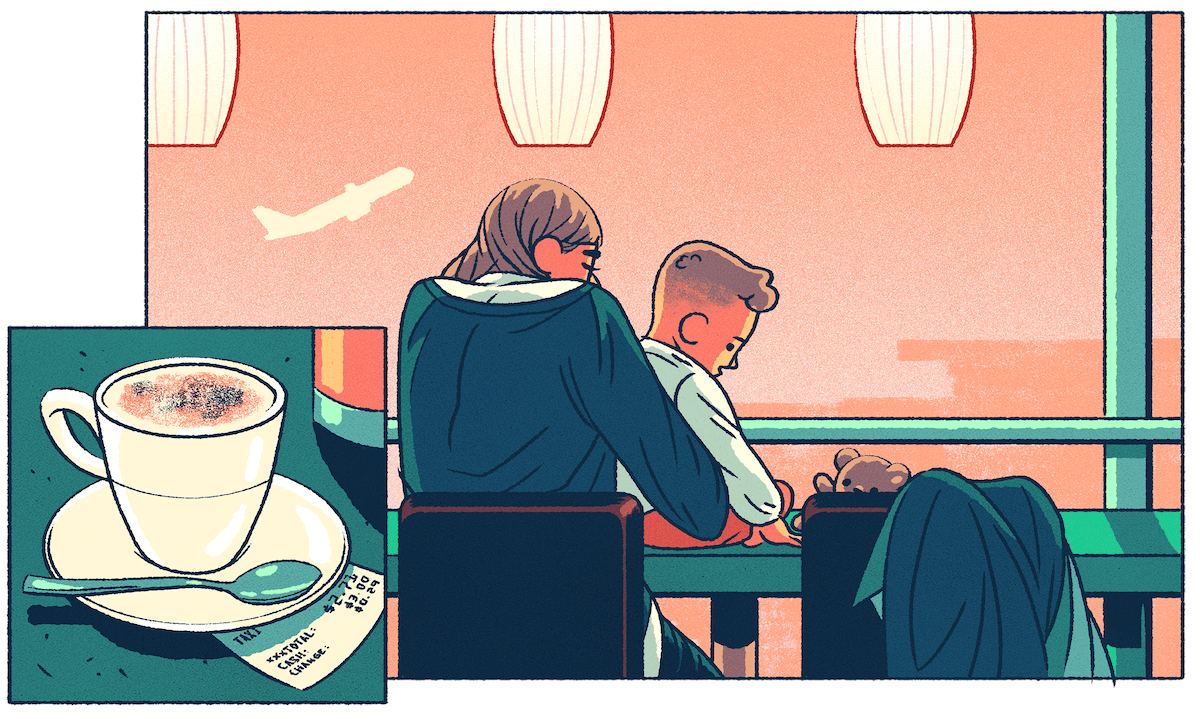
Scott Collier, GTAA: Fundamentally, we had been telling everyone what to do—just top-down. Instead, we said, "You know what? You guys know how to run this airport. You tell us how to do it.” We went to our friendlies—the commercial operators, the food and beverage, the duty-free retailers—and we said, “We don't want anything from you. We don't have a training program for you. We don't want any money. We just want to share an idea with you. And if you think it's a good idea, we'd like you to join us on this journey." We explained, we have this journey to become the best airport in the world. And we believe we can't be the best airport in the world unless we make you the best food and beverage retail operators in the world. And we want to start giving your people permission to start talking about it. We want to make your staff the heroes of Toronto Pearson. To a person, they signed off without any equivocation whatsoever!
GETTING PEOPLE ON BOARD FOR THE JOURNEY
Scott Collier, GTAA: IDEO asked us to think about how we—as the airport authority, just the 1,500 of us—could empower all 50,000 people who work here at the airport. How were we actually going to excite them? I realized that we had to change the conversation from "we" to "I.” Of course, at first everyone said, “That's not very Canadian," because Canadians are charmingly egalitarian. But I said, trust me on this, we've gotta figure out a way to make people personally accountable, and we can't go in and be the heroes on the high horse and say we're going to do it by ourselves. Until we start making people accountable for owning their business and doing what they say, this whole notion of going on a journey towards being the best will never happen.
Mike Ross, GTAA: There had been a very successful beer campaign in Canada called “I am Canadian,” and in the early days we were thinking of something similar to inspire that kind of spirit at the airport. But then IDEO prompted us to think about movements and see if we could make more than a campaign out of it, and really get something that was ground-up and not top-down. Ultimately we ended up calling that movement I Am Toronto Pearson.
I AM TORONTO PEARSON
Mike Ross, GTAA: We started with groups of ten people. We put them in a comfortable room and asked them to share their story of why they worked at the airport.
Scott Collier, GTAA: Calling it a “workshop” doesn't do it justice. We started a conversation. They started telling us stories about why they work at Pearson and their experiences with customers. These were front line people, these weren't middle managers and directors, these were everyday people who do the best they can, who struggle to get to the airport, and do magical things to make this place special. And just to watch them and see their pride was inspirational.
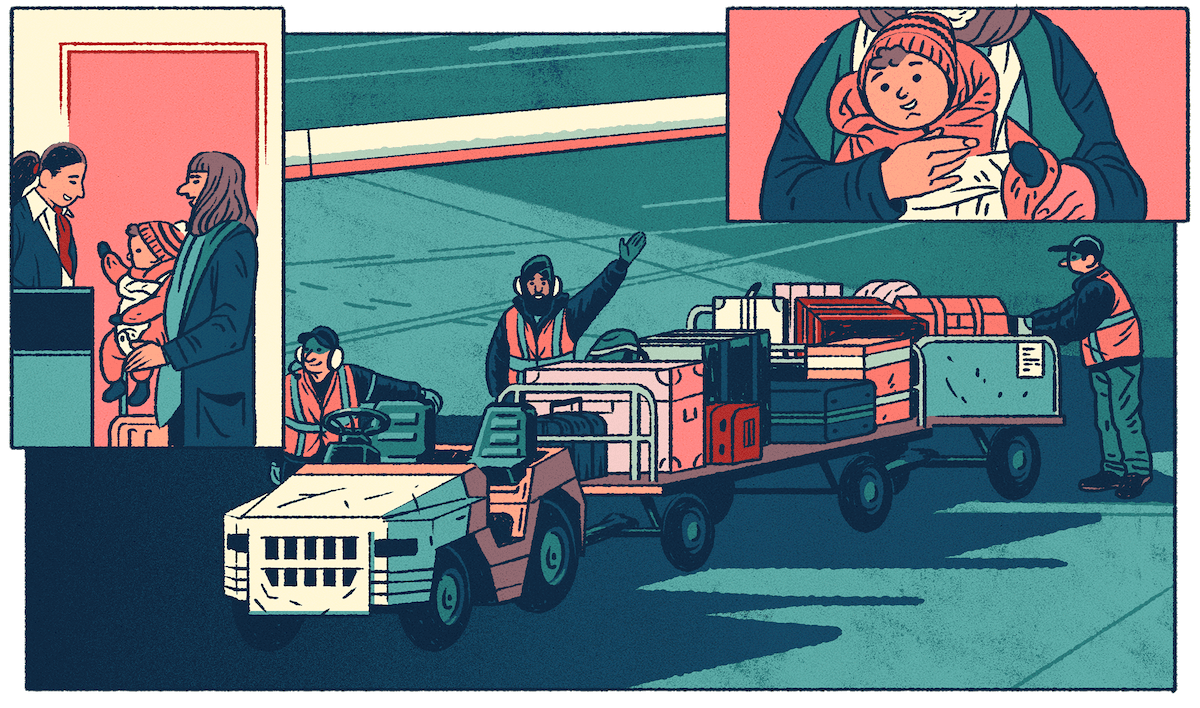
Mike Ross, GTAA: We learned that people could do the same work elsewhere—probably for more money and less hassle—but there was this pride in working at the airport, in such an emotionally charged place that moves millions of people a year. It turned out that this is a really sticky place to work. And that made people want to achieve that higher goal of being the best airport in the world.
Mat Chow, IDEO: I Am Toronto Pearson just played on what was already there: this deep sense of pride among so many airport employees for the human experiences they provided. You know, the airport can be this magical place of excitement—people are going somewhere or coming back, they’re meeting loved ones, there are these constant, intense, human-to-human connections. I Am Toronto Pearson gave people a moment to surface those human stories and really did tap into their pride in serving their customers, in serving Toronto, and really being ambassadors for Canada. When you're in the airport and you get to see the moments of gratitude and joy, that's incredibly infectious. Tapping into that broke down a lot of walls around the airport.
Scott Collier, GTAA: These first participants started to talk about it with their colleagues and it started to snowball! We learned as we went, and by the end of the year, roughly a thousand people had joined the movement. By the end of 2016, it was up to 5,000, and by the end of 2019, we will have 25,000 people as members of the club called I Am Toronto Pearson. It's remarkable.
Owen Rogers, IDEO: People went deeper than we'd ever imagined. They found reasons why they worked at the airport that even they hadn't seen. It was profound, the ability for so many people to truly show up. One participant shared that he and her family had fled a war in their native country and ended up in Toronto. She ended up getting a job at Pearson, and she recalled with gratitude the warm welcome her family had received there when they first arrived. Another employee spoke of her network of airport workers coming together to help find a child’s lost teddy bear—a moment that showed her how much individual workers care, and how much power they have when they work together.
CHANGING THE WAY THE ORGANIZATION THINKS
Scott Collier, GTAA: This was the key thing: creating a movement ultimately means changing the way an organization thinks. You don't show up to work to just grind away at the airport. You want to be part of something bigger than yourself. It's just extraordinary how powerful this idea is. It drives innovation. It creates better relationships. And—get this—it's damn good for business. I have become a believer. It works! But it takes courage, it takes leadership, and it takes trust.
More Gnarly Problems
APPLYING THE LESSONS TO BAGGAGE HANDLING
Scott Collier, GTAA: Well, they say imitation is the greatest form of flattery and some of my colleagues began to apply this approach as well. My amigos on the aviation side wondered, "How might I use human-centered design to reimagine how we do baggage?” Once again, we had a poor reputation for on-time baggage delivery, even though we at the “authority” don't handle any bags. So how do we engage the people who work on bags? How do we think about it differently to get them empowered and inspired?
Owen Rogers, IDEO: Scott’s counterpart Craig Bradbrook, Vice President of Aviation Services at GTAA, saw the work we had done together and called me into his office. He said, we're about to spend half a billion dollars on a new baggage system. And he drew this thing up on a whiteboard of like thirty-two stakeholders and said, “After all the work that I've seen you guys do, I've got to believe we're missing something. I want you to go and look at re-imagining baggage through a human lens.” We ended up changing things: different signage, cleaning up the washrooms, better lighting everywhere, new technology. But fundamentally it was about changing the culture of the people.
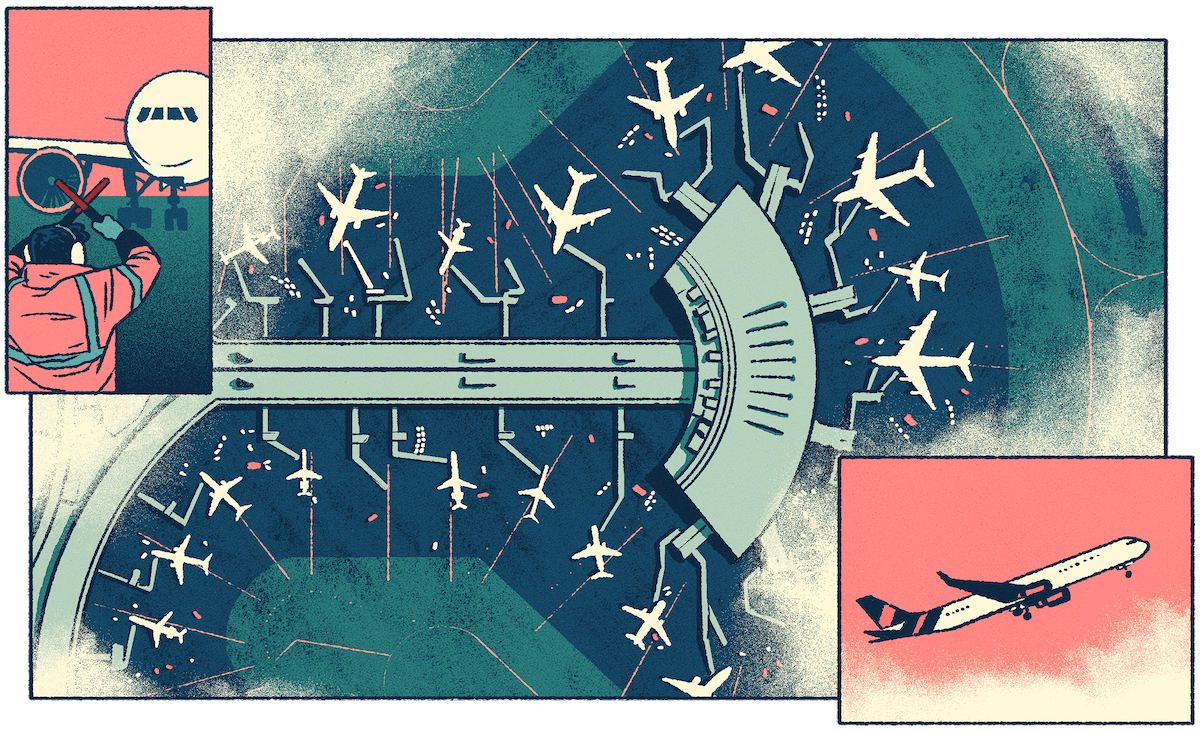
IT’S STARTING TO CATCH ON!
Scott Collier, GTAA: So something special is happening—the design-led movement is catching fire. One of my colleagues says, “Well, what about immigration?” So we think about a design project to help us reimagine customs and immigration. And another says, “We should do a design project on X, Y, and Z because this actually works!” But the best news is that the people who do the work are actually contributing to it. They're getting excited. Engagement scores are going up, performance scores are going up. Human-centered design and the design thinking process are a force multiplier. When you get like-minded people in a room together, and you take away all the nonsense and egos, when everybody shows up without an agenda—which is hard to do!—it is remarkable how quickly you can design a solution rather than just band-aid a problem. But you have to have the courage to do this. Everybody thinks they’re the smartest person in the room, but you know what? We’re not. Trust your people. It's amazing the stuff they'll do.
Illustrations by Michael Meier
Words and art

Subscribe

.svg)








